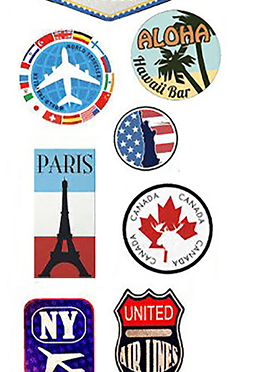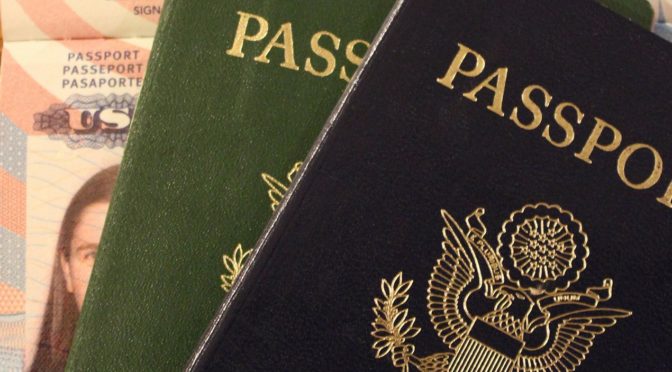Commercial air travel with a musical instrument can be a challenging and nerve-wracking experience. Handing over luggage is one thing, but a valuable instrument is quite another. With advance preparation, that is, reviewing airline regulations and following these guidelines, the process can go much more smoothly—and reduce your stress in this new age of air travel.
Making Reservations
Airlines are required to allow musicians to carry on instruments if there is room on the flight and instruments fit safely in overhead compartments or under seats. For instruments too large for overhead compartments, you may be able to carry on these instruments if you book a seat as “seat baggage” or “cargo in passenger cabin.” Airlines are not required to allow you to book a seat for your large instrument, but some airlines will permit you to do so for a fee. Fees can be equal to the cost of your ticket.
Airlines must allow you to check instruments in the baggage hold if the sum of the length, width, and height (linear inches) of the exterior case do not exceed 150 inches and the weight does not exceed 165 pounds. Some airlines will permit instruments exceeding these limitations, but you may be required to pay “oversize” fees.
Determine the size in linear inches for your instrument’s case. (For example, if your case has dimensions of 20″ x 10″ x 10″, the linear measure would be 40 inches.) You can find links to the major airline policies in the AFM Travel Kit at https://www.afm.org/what-we-are-doing/travel-resources/afm-travel-kit/.
When purchasing air tickets:
- Inform the carrier representative that you will be transporting a musical instrument.
- Request or purchase priority seating or Zone 1 boarding, which will allow you early access to overhead bin stowage.
- Special fees cannot be charged for an instrument, but typical carry-on fees will apply.
Preparing to Travel
Pack your instrument in a hard case. Even if you’re taking it as hand luggage, flimsy instrument bags are a no-no. Get a sturdy case to reduce the risk of damage. Airlines will require a case that meets the Air Transport Association (ATA) 300 required standard.
Use fragile stickers on the case and be sure it’s clearly labeled with your contact details inside and outside. All checked baggage should have a tag outside the bag with your name, permanent address, and phone number (preferably a cell where you can be reached during your trip). Include a note with the same information inside the instrument case.
If you plan to carry your instrument in the cabin, all tools and other items should be checked or carried separately. Items that are familiar to you—cleaning fluids and tools, valve oil, end pins, reed knives, mutes, tuners, metronomes—may be deemed suspicious by screening personnel.
At the Airport
Musical instruments transported as carry-on require a physical inspection at the security checkpoint. Inform the TSA officer if your instrument requires special care and handling.
Keep carry-on items to a minimum. Passengers are permitted one carry-on bag (stored in the overhead bin) and one personal item (stored under the seat). The instrument will be counted as one of these items.
Board your flight as early as possible since overhead compartments are distributed on a first-come basis. Once an instrument is stowed in-cabin, it cannot be removed or be replaced by other passengers’ items. The reverse is also true—airlines are not required to remove other passengers’ items to make room for your instrument.
If you’re carrying an instrument larger than a guitar, like a cello, you should purchase an extra seat. It’s usually called “seat baggage” or sometimes “cargo in the cabin” and typically a window seat. A weight limit may still apply and you might be limited to certain locations in the cabin.
If you must check your instrument, insist that it is put in the temperature controlled section of the cargo hold where pets are placed. If it goes in the regular baggage hold, changes in temperature may cause serious damage.
If you are traveling with instruments that are made of rare materials, become familiar with the Convention on International Trade in Endangered Species of Wild Fauna and Flora (www.cites.org). Instruments may include unique materials. For example, if your bow is made with horse hair or your strings with gut, you might want to check if you’ll need a permit to take these materials on board.
It’s a good idea to photograph everything in its preflight state. Examine your instrument for damage before leaving the airport at your destination. If you discover damage, report it immediately to the airline baggage office near the baggage claim carousels and be sure to fill out a claim form before you leave the airport.
If Something Goes Wrong
Have a backup plan. You may not be able to travel with your instrument in-cabin—even if you have followed all the procedures. What will you do? Are you willing to send your instrument by air courier? Some airlines will provide passengers with a box or envelope in which the item can be shipped back home.
Know the airline’s policies as you understand them—among your documentation, have a printed copy from their site—and explain the precautions you have taken to prepare your instrument for safe travel. If necessary, ask to resolve the matter with a customer service representative or airline supervisor.
If your experience flying runs counter to the policies posted by the airlines, you are strongly encouraged to submit a complaint to both the airline and the US Department of Transportation (DOT). Start first with a complaint to the airline. The DOT requires airlines to acknowledge consumer complaints within 30 days of receiving them and to send a substantive response within 60 days of receiving the complaint. Submit a copy of your complaint to the DOT at www.transportation.gov/airconsumer/file-consumer-complaint, so that they have a record of the difficulty musicians encounter when flying. The DOT monitors complaints for patterns or egregious cases that warrant actions to ensure that airlines are complying with laws and regulations.
Quick Reminders
- Pack your instrument in a hard case and place identification inside and outside the case.
- When making reservations, mention you will be traveling with an instrument and request priority boarding.
- Pay fees during the call with the agent and have receipts emailed to you.
- Carry a copy of the DOT Rule as outlined in the Federal Register.
- Do not argue with flight crews! Musicians who encounter problems at the gate or onboard should immediately ask to speak with an airline customer service supervisor or a complaint resolution officer.
- Inspect your instrument after landing. Report any violation of airline policy or damage with airline customer service before you leave the airport.
- Insure your instrument in case there is any problems associated with the flight.



